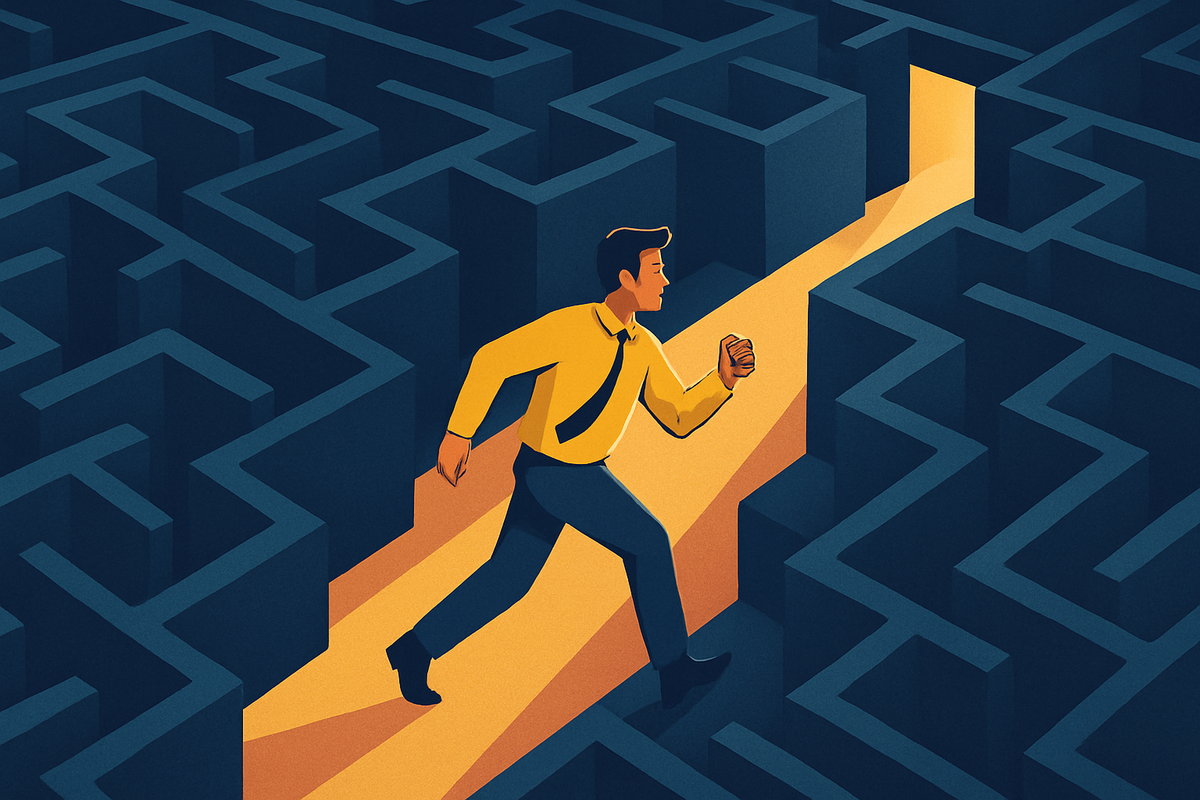Fast Decisions, Long-Term Wins: Why Speed Is the Quiet Superpower of Success

Picture this.
You’re standing at the entrance of a maze. The walls tower above you, casting long shadows across the twisting corridors. There is no map. No clear signposts. Only countless forks, each one asking for your judgment. Some people freeze at the threshold, convinced they must calculate the perfect path before taking a single step. They analyse. They hypothesise. They overthink.
Others? They just move.
They pick a direction. They walk with purpose. If they find a wall, they turn around. If they reach a dead end, they course correct. But every step teaches them something. And that knowledge becomes their edge.
Life, much like the maze, doesn’t reward the person who waits for certainty. It rewards the one who acts with clarity amidst uncertainty. The one who makes decisions quickly, and trusts themselves to adapt as needed.
This is the art of fast decision making. It’s not chaos. It’s not recklessness. It’s strategic speed. And it’s one of the most underrated superpowers of long term success.
Action Over Accuracy
We have grown up in a world that idolises precision. From school exams to business forecasting, we are taught to value being right. But in the real world, especially in entrepreneurship and leadership, accuracy takes a back seat to action.
You don’t win the race by mapping out every bend. You win by getting on the track, running your heart out, and adjusting your stride as you go.
Making decisions fast doesn’t mean you ignore data. It means you act on what you know, and then gather more data through action itself.
Think about startup founders. The ones who wait for the perfect product tend to vanish into obscurity. The ones who ship fast, get real feedback, iterate and pivot? They build momentum. They grow. They learn at a pace the perfectionists cannot match.
Speed turns the abstract into the actual. It turns intention into momentum. And momentum is the heartbeat of progress.
Fear of Failure: The Silent Killer of Dreams
What truly stops most people from making decisions isn’t lack of information. It’s fear.
Fear of getting it wrong. Fear of judgment. Fear of the unknown.
But here’s the truth: indecision is a decision. And it’s often the worst one you can make. While you hesitate, the world keeps turning. Opportunities move on. Competitors make a move. Time ticks forward, indifferent to your paralysis.
Failure isn’t the villain. In fact, failure is often the best tutor you’ll ever have. It gives immediate feedback. It sharpens your edge. It teaches you what books cannot.
Every successful person you admire has a string of failures behind them. What they don’t have is a lifetime of second guessing and what ifs.
If you’re afraid to choose, ask yourself this: What’s the worst thing that can happen if I get this wrong? Nine times out of ten, the answer is survivable. Learnable. Reversible.
But the cost of waiting? That’s time you’ll never get back.
The Compounding Power of Velocity
Fast decision making compounds like interest. It builds over time, not just in results but in skill.
Every decision you make sharpens your judgment. Your gut gets smarter. Your ability to discern patterns improves. What once took days of agonising can be solved in moments with clarity and confidence.
This is the quiet magic of speed. It doesn’t just get you somewhere faster. It makes you better along the way.
And something else happens when you become known for fast, thoughtful decisions: people trust you. You become a leader, not because you have all the answers, but because you have the courage to make the call.
Speed also creates space. When you move quickly on one decision, you unlock time and energy for the next. This cycle of movement breeds creative flow. And in business or life, flow is where the magic happens.
A Practical Takeaway
So what can you do to start living this principle today?
Try this simple four step process when facing a decision:
- Clarify the stakes – Ask yourself, is this decision truly high risk? Or am I just afraid of being wrong?
- Trust your current knowledge – Use what you already know. Make the best decision based on your present data.
- Set a time limit – If you’re stuck, give yourself 60 seconds. Decide before the timer ends.
- Act and review – Take the step, then observe what happens. Learn. Adjust. Repeat.
That’s it.
Decide. Move. Learn. Refine. Grow.
This process beats perfection every time.
Final Thought
Life doesn’t wait. The people who get ahead are not always the smartest or most prepared. Often, they’re just the fastest to choose.
They’re the ones who know that clarity comes from movement. That confidence is built in motion, not in stasis. That making a wrong turn teaches more than standing still ever could.
So make a decision. Make it now. Then use what you learn to make the next one even faster.
Because in the end, it’s not about always being right. It’s about always moving forward.